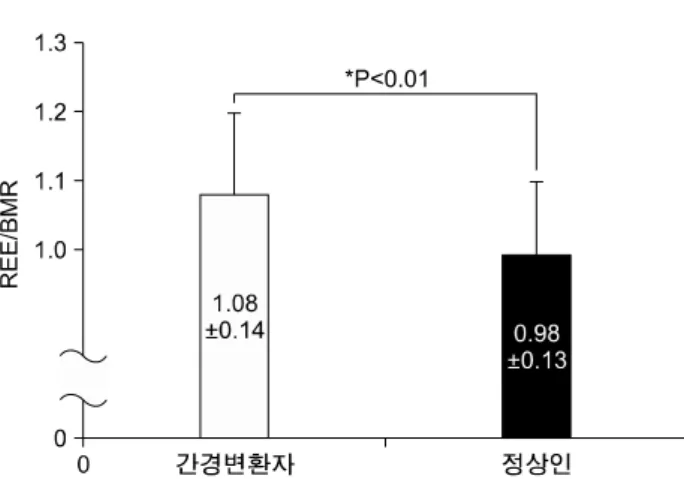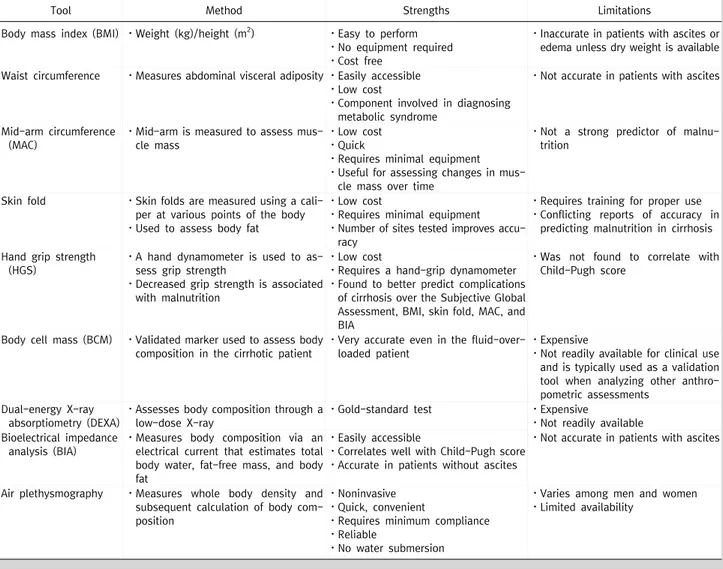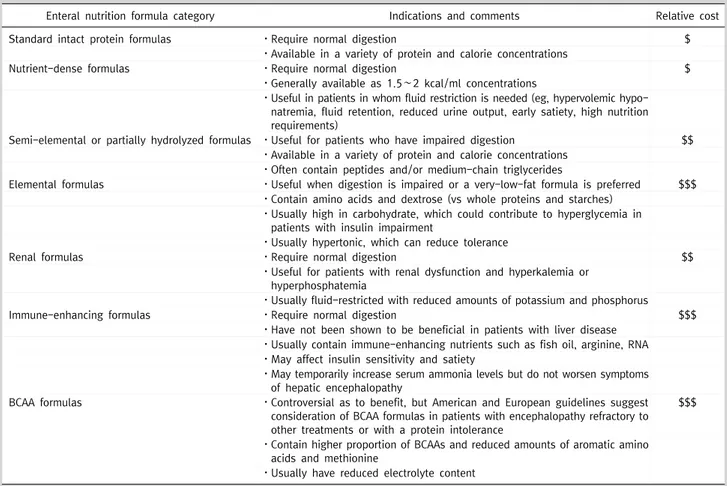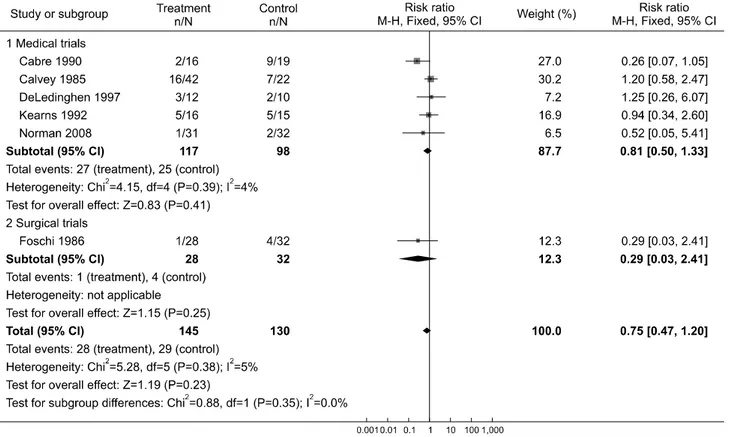REVIEW ARTICLE
Vol. 8, No. 2, December, 2017
Received December 28, 2017. Accepted December 30, 2017.
Correspondence to: Kyung Sik Kim, Department of Surgery, Yonsei University College of Medicine, Division of Hepatobiliary and Pancreatic Surgery, Department of Surgery, Severance Hospital, 50-1 Yonsei-ro, Seodaemun-gu, Seoul 03722, Korea
E-mail: kskim88@yuhs.ac
CC This is an open access article distributed under the terms of the Creative Commons Attribution Non-Commercial License (http://creativecommons.org/licenses/by-nc/4.0) which permits unrestricted non-commercial use, distribution, and reproduction in any medium, provided the original work is properly cited.
Copyrights ⓒ The Korean Society of Surgical Metabolism and Nutrition
간질환 환자에서의 경장영양요법
김 경 식
연세대학교 의과대학 외과학교실 세브란스병원 간담췌외과
Enteral Nutrition in Liver Disease
Kyung Sik Kim, M.D., Ph.D.
Department of Surgery, Yonsei University College of Medicine, Division of Hepatobiliary and Pancreatic Surgery, Department of Surgery, Severance Hospital, Seoul, Korea
Patients with chronic liver disease have a high risk to malnutrition. Proper nutrition should be provided through a proper nutritional assessment. Enteral nutrition is recommended as a nutritional supplement because it maintains the intestinal mucosa, reduces infectious complications, is less costly than parenteral nutrition, and is more physiological to use intestine. The purpose of this review is to define the nutritional deficiencies of patients with liver disease and to show the indications for enteral nutrition and to validate the efficacy of enteral nutrition. According to the various guidelines and researches, enteral nutrition is used as a solution to the nutritional problems caused by patients with liver disease. The optimal enteral formula will be selected on the nutritional problems. It is expected that the enteral nutrition will reduce especially postoperative complications, intraperitoneal complications, pneumonia, and wound infection. The enteral nutrition for patients with chronic liver disease should be actively implemented. (Surg Metab Nutr 2017;8:28-35) Key Words: Chronic liver disease, Enteral nutrition, Enteral formula, Indication, Efficacy
서 론
최근 들어 다양한 약제의 등장으로 비교적 양호한 경과를
보이기는 하지만 아직도 많은 간질환 환자들이 만성 질환의 양
상으로 만성 간염에서 30∼50년 경과 후 간경변으로 이행되어
간경변증에 의한 합병증으로 인해 사망하는 것으로 알려져 있
다. 정상 사람보다 간경변 환자에서 기초 대사량과 휴식 에너지
소비량의 비율이 높아 에너지 소비가 많은 것으로 보고되고 있
어 영양 불량이 발생할 위험이 매우 높다(Fig. 1).
특히 심한 간경변 환자에서는 단백질 부족과 에너지 영양
불량이 같이 있는 경우가 많아 골격근과 면역 기능이 손상될
수 있어 이에 대한 영양 공급은 필수적이다.[1]
경장 영양 요법은 장점막을 유지하여 감염성 합병증을 줄이
며 정맥 영양 요법에 비해 적은 비용으로 가능하며 보다 생리
적이라는 점에서 영양 공급에 있어서 우선 시행하는 것이 권장
되고 있다.[2] 경장 영양 요법은 아주 오래 전부터 시행되어
온 방법으로 이집트 시대에서도 시행되었다는 보고도 있지만
1910년 날문통과 튜브(postpyloric tube) 삽입이 시도되면서
도입되기 시작되었고 1970년대부터 많은 경구용 제재가 개발
되면서 활기를 띠게 되었다.[3] 최근에 발간된 중환자 관리 의
학회(society of critical care medicine)과 미국 경장 영양학회
(American society of parenteral and enteral nutrition)에서
제정한 영양 지원 제공과 평가에 관한 가이드라인에서 간부전
을 보이는 중환자에 대해서 다음의 3가지의 주요 질문을 하고
있다.[4] 첫째, 간부전을 보이는 중환자에서 에너지 및 단백질
의 공급을 간부전이 없는 경우에 동일하게 결정해야만 하나?
Table 1. Factors contributing to malnutrition in patients with chronic liver disease
Factor Mechanisms
Inadequate nutrient intake ↑Levels of tumor necrosis factor-α and leptin → loss of appetite
Ascites → impaired gastric expansion → early satiety, delayed gastric emptying, bloating, abdominal distention Hepatic encephalopathy → altered consciousness with decreased oral intake
Alcohol intake replaces nutrition Nausea and vomiting
Restrictive diets (low-sodium, low-protein, fluid restriction) Altered taste perception (zinc deficiency)
Socioeconomic constraints
Metabolic alterations Altered glucose, lipid, and protein metabolism Altered pattern of energy consumption
Decreased glycogen levels and reduced ability to store nutrients Insulin resistance
Malabsorption Bile salt deficiency in cholestatic liver disease and cholestasis Small bowel bacterial overgrowth
Portal hypertensive enteropathy Fig. 1. Resting energy consumption and basal energy requirement in normal and patients with liver cirrhosis.
Fig. 2. Interaction between hepatic function insufficiency and insulin resistance.
둘째, 간부전을 보이는 환자에서 적합한 영양 공급 경로는 무엇
인가? 셋째, 간질환을 가진 중환자에서 질병 특이 경장제재가
필요한가? 전문가들의 의견 합의에 근거할 때 급성/만성 간질
환을 가진 중환자에서도 경장 영양 공급이 영양 공급의 방법으
로 더 선호된다.[5] 이들 환자에게 제공되는 경장제재로는 표준
경장 제재를 권장하고 있으며 간성 혼수에 빠진 경우에 장관에
작용하는 항생제와 락트로우즈(lactulose)를 투여하고 있다면
분지형 아미노산 제재(branched chain amino acid)의 공급은
더 이득이 있다는 증거는 없다고 하였다.[6]
그러므로 본 종설에서는 간질환 환자에서의 영양 부전 요인
을 살펴보고 영양 지원에 관한 진료 가이드라인에서 제시한 경
장영양 요법에 대한 적응증과 여러 가지 경장 제재의 효능성에
대해 알아보고자 한다.
본 론
1. 만성 간질환에서의 영양 부전의 요인
만성 간질환 환자에서의 영양 부전이 일어나는 원인을 살펴
보면 크게 1) 부적절한 영양 섭취, 2) 대사의 변화, 3) 흡수 장
애이다(Table 1).[7] 부적절한 영양 섭취는 종양 괴사인자 알파
(Tumor necrosis factor α)와 렙틴(leptin)의 증가에 의한 식
욕(appetite)의 감소에 의해 생기게 된다. 또한 간경변으로 생
긴 복수는 위의 팽창을 막아 조금만 먹어도 배가 부르게 되고
위배출이 저하되며 속이 더부룩한(bloating) 느낌과 복부 팽창
을 야기하게 된다. 그 밖의 원인으로는 간성 혼수로 인한 구강
섭취의 저해, 알코올성 간질환에서는 알코올의 섭취, 메스꺼움
과 구토, 저염식 식이 및 저단백식이, 수분제한, 아연 부족에
Table 3. Anthropometric assessment in end stage liver disease
Tool Method Strengths Limitations
Body mass index (BMI) ㆍWeight (kg)/height (m2
) ㆍEasy to perform ㆍNo equipment required ㆍCost free
ㆍInaccurate in patients with ascites or edema unless dry weight is available Waist circumference ㆍMeasures abdominal visceral adiposity ㆍEasily accessible
ㆍLow cost
ㆍComponent involved in diagnosing metabolic syndrome
ㆍNot accurate in patients with ascites
Mid-arm circumference (MAC)
ㆍMid-arm is measured to assess mus-cle mass
ㆍLow cost ㆍQuick
ㆍRequires minimal equipment ㆍUseful for assessing changes in
mus-cle mass over time
ㆍNot a strong predictor of malnu-trition
Skin fold ㆍSkin folds are measured using a cali-per at various points of the body ㆍUsed to assess body fat
ㆍLow cost
ㆍRequires minimal equipment ㆍNumber of sites tested improves
accu-racy
ㆍRequires training for proper use ㆍConflicting reports of accuracy in
predicting malnutrition in cirrhosis Hand grip strength
(HGS)
ㆍA hand dynamometer is used to as-sess grip strength
ㆍDecreased grip strength is associated with malnutrition
ㆍLow cost
ㆍRequires a hand-grip dynamometer ㆍFound to better predict complications
of cirrhosis over the Subjective Global Assessment, BMI, skin fold, MAC, and BIA
ㆍWas not found to correlate with Child-Pugh score
Body cell mass (BCM) ㆍValidated marker used to assess body composition in the cirrhotic patient
ㆍVery accurate even in the fluid-over-loaded patient
ㆍExpensive
ㆍNot readily available for clinical use and is typically used as a validation tool when analyzing other anthro-pometric assessments
Dual-energy X-ray absorptiometry (DEXA)
ㆍAssesses body composition through a low-dose X-ray
ㆍGold-standard test ㆍExpensive
ㆍNot readily available Bioelectrical impedance
analysis (BIA)
ㆍMeasures body composition via an electrical current that estimates total body water, fat-free mass, and body fat
ㆍEasily accessible
ㆍCorrelates well with Child-Pugh score ㆍAccurate in patients without ascites
ㆍNot accurate in patients with ascites
Air plethysmography ㆍMeasures whole body density and subsequent calculation of body com-position
ㆍNoninvasive ㆍQuick, convenient
ㆍRequires minimum compliance ㆍReliable
ㆍNo water submersion
ㆍVaries among men and women ㆍLimited availability
Table 2. Tools for assessing oral protein-energy intake in end stage liver disease Assessment
Tool Method Strengths Limitations
24-Hour recall ㆍParticipant recalls all foods and beverages consumed over the previous 24 hours
ㆍUsed to estimate protein-calorie intake
ㆍLow cost ㆍQuick
ㆍNo equipment required
ㆍMay be inaccurate in those with poor memory or encephalopathy
ㆍUnderreporting of portions and food items consumed may occur in women, those with body issues, or those who are overweight Food frequency
questionnaire
ㆍParticipant is given a list of foods/ beverages and indicates how frequently these foods are consumed
ㆍLow cost ㆍQuick
ㆍMay not represent foods typically consumed ㆍHigh level of participant literacy required ㆍDoes not provide data on portion sizes or
actual protein-energy intake Calorie count ㆍA healthcare professional calculates
protein-energy intake based on foods consumed
ㆍDoes not rely on patient’s recall ㆍLow cost
ㆍNo equipment required
ㆍSubjective
ㆍPortion sizes may not be standard or well documented
ㆍOften relies on nursing staff to complete Food diary ㆍPatient or caregiver records foods eaten
ㆍProtein-energy intake is then calculated by a healthcare professional
ㆍLow cost
ㆍDoes not require special equipment ㆍCan be very accurate
ㆍRequires instruction by provider ㆍRequires a higher level of literacy ㆍSubjectivity may lead to inaccuracies ㆍTypically underestimates energy intake ㆍTime-consuming for provider to analyze
Table 4. Protein-energy requirements in end stage liver disease A.S.P.E.N./ESPEN
Energy requirement based on dry weight or determined ideal body weight if ascites is present
25∼40 kcal/kg/d A.S.P.E.N.
Stable and malnourished REE×1.2∼1.4
Without encephalopathy REE×1.2∼1.4 1.0∼1.5 g/kg/d protein Acute encephalopathy REE×1.2∼1.4 0.6∼0.8 g/kg/d protein ESPEN
All stable cirrhosis patients 35∼40 kcal/kg/d 1.0∼1.5 g/kg/d protein Critically Ill
ICU malnourished patients at risk for refeeding 15∼20 kcal/kg/d 1.2 g/kg/d protein ICU for maintenance caloric support 25∼30 kcal/kg/d 1.5 g/kg/d protein
Catabolic 35∼50 kcal/kg/d
Critically ill obese (body mass index >30) Mifflin–St Jeor equation
Indirect calorimetry for comorbidities 1.5∼2.0 g/kg/d protein ideal body weight
의한 입맛의 변화, 사회 경제적인 제약(socioeconomic
con-straints) 등이 있다.
간질환 환자에서의 대사의 변화를 살펴보면 탄수화물, 지방
및 단백질 대사가 변하고 에너지 소비의 형태가 달라진다. 글리
코겐의 저장 정도가 낮아지고 영양분의 저장 능력이 감소하며
인슐린 저항성이 생기게 된다는 것이다(Fig. 2).
담즙 정체성 간질환의 경우에는 담즙의 부족이 나타날 수
있고 박테리아의 과잉 증식과 문맥압의 증가로 인해 위장관장
애가 일어나서 흡수장애가 생길 수 있다.
2. 만성 간질환 환자에서의 영양 평가
앞에서 언급한 것처럼 만성 간질환환자에서 영양 불량은 쉽
게 일어날 수 있으므로 적절한 영양 공급을 시행하기 위해서
영양 평가는 반드시 필요하다. 영양 평가는 기존의 방법으로
시행할 수 있으나 프리알부민과 알부민과 같은 생화학적 지표
를 사용할 경우에는 이들 지표가 간에서 형성되기 때문에 간질
환의 정도에 따라 합성 능력과 염증에 의한 반응으로 정확한
검사가 어려울 수 있다. 각각의 영양 평가 방법에 따른 장점과
단점을 정리하면 아래와 같다(Table 2, 3).[8]
3. 여러 가이드라인에서 권장되는 간질환 환자 경장 영양
공급 방법과 경장 제재
1) 유럽 경정맥 경장 영양학회 가이드라인(2006) [9]
적절한 개인맞춤 영양 조언에도 불구하고 경구섭취를 통해
칼로리 필요량을 충족하지 못할 경우에는 경장영양 공급으로
보충해야 하며 정맥류가 있더라도 경구 혹은 경관 급식을 시행
한다. 경피적 내시경 위창냄술(percutaneous endoscopic
gastrostomy)은 합병증의 위험이 높기 때문에 권장되지는 않
는다.
전체 단백제재를 일반적으로 권장하며 간성 혼수가 있는 환
자에서는 분지형 아미노산 제재가 많이 들어 있는 제재를 사용
한다. 간경변이 심한 경우에는 경구용 분지형 아미노산 제재의
사용이 임상 결과를 증진할 수 있다.
2) 미국 경정맥 경장 영양학회 및 중환자 관리 의학 학회 가이
드라인(2009) [10]
급성 만성 간질환을 가진 중환자에서 경장 영양 요법은 영양
치료에 있어서 선호되는 방법으로 간부전을 가진 환자에서도
단백질을 제한해서는 안되며 표준 경장 제재를 사용해야 한다.
장관에 작용하는 항생제와 락투로우즈의 표준 치료에 반응이
없는 드문 간성혼수 환자를 위해 분지형 아미노산 제재는 남겨
두어야 한다.
3) 미국 간학회와 위장관 미국 대학 협회 가이드라인(2010) [11]
알코올성 간질환에 대한 미국 간학회와 위장관 미국 대학
협회 가이드라인에서는 중증도의 알코올성 간질환 즉 Maddrey
점수 32점 미만이거나, 간성 혼수가 없고 입원 첫 주 동안
Maddrey 판별 기능(discriminant function)에서 혈청 빌리루
빈 수치가 호전되거나 감소되는 환자에서 영양공급과 절주 이
외에 다른 내과적 치료는 도움이 되지 않고 세심한 경과 관찰
을 해야 한다고 하고 있다. 특히 알코올성 간경변을 가진 환자
에서는 질소 균형(nitrogen balance)을 호전 시키기 위해 저녁
스낵, 아침 급식 등의 기간급식(interval feeding)을 해야 한다.
4) 그 밖의 영양 지원 가이드라인
알코올성 간질환에 관한 NICE (2010) 가이드라인[12]과 C
형 간염에 관한 SIGN (2013) 가이드라인[13]에서 모두 영양
부전을 막기 위해서 적극적인 영양 요법을 권장하고 있고 필요
하다면 비위관 삽입을 통한 급식도 고려할 수 있다고 언급하고
Table 5. Hepatic disease specific formulas
Nutritional problems Formula characteristics
Malnutrition Calorically dense
Altered protein/carbohydrate metabolism High branched-chain: aromatic amino acid ratio Impaired urea synthesis
Fat malabsorption Fat system with MCT oil
Micronutrient deficiencies Modified micronutrient profile Fluid/sodium retention Calorically dense, low sodium
Table 6. Enteral nutrition formula options for patients with chronic liver disease
Enteral nutrition formula category Indications and comments Relative cost
Standard intact protein formulas ㆍRequire normal digestion $
ㆍAvailable in a variety of protein and calorie concentrations
Nutrient-dense formulas ㆍRequire normal digestion $
ㆍGenerally available as 1.5∼2 kcal/ml concentrations
ㆍUseful in patients in whom fluid restriction is needed (eg, hypervolemic hypo-natremia, fluid retention, reduced urine output, early satiety, high nutrition requirements)
Semi-elemental or partially hydrolyzed formulas ㆍUseful for patients who have impaired digestion $$ ㆍAvailable in a variety of protein and calorie concentrations
ㆍOften contain peptides and/or medium-chain triglycerides
Elemental formulas ㆍUseful when digestion is impaired or a very-low-fat formula is preferred $$$ ㆍContain amino acids and dextrose (vs whole proteins and starches)
ㆍUsually high in carbohydrate, which could contribute to hyperglycemia in patients with insulin impairment
ㆍUsually hypertonic, which can reduce tolerance
Renal formulas ㆍRequire normal digestion $$
ㆍUseful for patients with renal dysfunction and hyperkalemia or hyperphosphatemia
ㆍUsually fluid-restricted with reduced amounts of potassium and phosphorus
Immune-enhancing formulas ㆍRequire normal digestion $$$
ㆍHave not been shown to be beneficial in patients with liver disease ㆍUsually contain immune-enhancing nutrients such as fish oil, arginine, RNA ㆍMay affect insulin sensitivity and satiety
ㆍMay temporarily increase serum ammonia levels but do not worsen symptoms of hepatic encephalopathy
BCAA formulas ㆍControversial as to benefit, but American and European guidelines suggest consideration of BCAA formulas in patients with encephalopathy refractory to other treatments or with a protein intolerance
$$$
ㆍContain higher proportion of BCAAs and reduced amounts of aromatic amino acids and methionine
ㆍUsually have reduced electrolyte content
있다.
4. 말기 간질환 환자에서의 단백질 에너지 요구량[8]
각각의 가이드라인에서 권장하는 단백질 에너지 요구량을
살펴보면 급성 간성 혼수의 경우에는 단백질을 0.6∼0.8
g/kg/d로 제한하지만 대부분의 경우 정상인 보다 많은 양을
공급해야 하며 에너지 소모량이 많으므로 에너지 공급도 정상
보다 많아야 한다고 하고 있다(Table 4). 영양 불량을 가진 간
경변 환자에서는 식욕이 저하되어 있어 경장 공급이 경구 영양
공급보다 더 효과적이다. 식도정맥류의 가능성 때문에 경관급
식에 대해 다소 논쟁이 있기는 하지만 위장관 출혈이 많지 않
거나 간헐적인 경우에도 절대적인 금기는 아니다. 권장되는 경
장영양제재는 1 ml당 1.5 Kcal의 고에너지이며 염분은 하루에
40 mmol의 저염식이로 구성한다.
5. 여러가지 경관영양 요법
경관 급식에 대해 여러 가지의 시도가 보고 되고 있다.[7]
자발적인 경구 영양에 보충적으로 경장 영양을 시행할 경우 생
Fig. 3. Mortality comparing enteral nutrition to control.
존과 간기능의 항진 효과가 있으며 자기 의지에 의한 경구 섭
취가 감소한 환자에서 유익한 효과를 대부분 볼 수 있었다. 단
백질은 하루에 kg 당 1.8 g까지 주어도 정신상태 효과에 해롭
지 않게 잘 적응하였다. 단백질 표준제재 및 고함유 분지형 아
미노산제재를 사용한 경우에 유익한 결과를 얻었으며 특히 야
식의 보충은 주간 영양 공급보다 더 효율적으로 총 채내 단백
질을 향상시킨다는 것이다.
6. 다양한 경장영양제재
간질환을 가지고 있는 환자의 영양학적 문제가 무엇인가에
따라 특징적인 경장영양제재가 선택된다(Table 5).
간질환 특이 경장 제재는 우리나라에서도 정식품에서 경장
제재가 출시된 적이 있으나 2007년 단종되었고, 세계적으로도
특수의료용 식품으로 2∼3개의 제품이 있었지만 현재는 네슬
레의 NutriHep만 생산되고 있다. 참고적으로 NutriHep의 함
량을 살펴보면 1 ml당 1.5 Kcal로 단백질 11%, 탄수화물 77%,
지방 12%로 구성되어 있다. 단백질은 분지형아미노산이 50%
이고 지방은 중쇄지방산(medium chain fatty acid)과 장쇄지
방산(long chain fatty acid)으로 되어 있고 중쇄지방산과 장쇄
지방산과의 비율이 70:30이다. 간질환 특이 경장 제재가 제한
되어 있어 일반적인 표준 경장제재, 영양강화제재, 반성분제재
(semi-elemental) 혹은 부분적 가수분해 제재, 성분 제재, 신장
용 제재, 면역 항진 제재, 분지형아미노산제재 등이 사용되며
각각의 제재의 적응증은 다음과 같다(Table 6).[7]
7. 경장 영양 요법의 효용성
Koretz 등[1]이 2012년 1월까지 검색된 자료를 근거로 하여
보고한 간질환을 가진 환자에서 영양 지원에 관한 Cochrane
review를 살펴보면 enteral nutrition이 사망률에는 도움을 준
다고 하고 있다(Fig. 3).
그 이후 2013년 8월까지 발표된 3개의 논문을 추가하여 시
행한 메타 분석에서는 경관 영양과 경구 보조제의 유용성에 대
해 아래와 같이 정리하였다(Table 7, 8).[14]
결 론
만성 간질환을 가진 환자에서는 영양불량이 생길 가능성이
높아 합리적인 영양평가를 통하여 적절한 영양 공급은 반드시
필요하다. 경장영양요법은 장점막을 유지하여 감염성 합병증을
줄이며 정맥 영양 요법에 비해 적은 비용으로 가능하고, 보다
Table 7. Results of meta-analyses of trials comparing enteral nutrition to no nutritional interventions in patients with various liver diseases Outcome Cirrhosis Alcoholic hepatitis Liver transplantation Obstructive jaundice Mortality 0.85 (0.54, 1.33); 4 (219) 1.10 (0.61, 1.99); 2 (95) No data 0.29 (0.03, 2.41); 1 (60)
Appearance ascites No data No data No data No data
Resolution ascites 0.86 (0.46, 1.62); 1 (29) No data No data No data Gastrointestinal bleeding 1.17 (0.59, 2.34); 4 (215) 2.88 (0.70, 11.87); 1 (64) No data No data Appearance encephalopathy 3.13 (0.64, 15.34); 2 (121) 1.03 (0.26, 4.12); 2 (48) 1.71 (0.46, 6.44); 1 (32) No data Resolution encephalopathy No data 1.57 (0.59, 4.13); 2 (47) No data No data Infections 0.91 (0.65, 1.29); 4 (211) 0.96 (0.41, 2.25); 1/64 0.46 (0.15, 1.40); 1 (31) 0.51 (0.18, 1.47); 1 (60) Serum bilirubin 0.37 (0.40, 1.15); 2 (162) 5.90 (17.54, 5.74); 1 (31) No data No data Duration of hospitalization 1.08 (2.65, 4.80); 2/57 No data 9.80 (27.66, 8.06); 1 (31) No data Total postoperative
complications
N/A N/A No data 0.35 (0.16, 0.91); 1 (60)
Intra-abdominal postoperative complications
N/A N/A No data 0.46 (0.10, 2.17); 1 (60)
Postoperative pneumonia N/A N/A No data 0.38 (0.02, 8.95); 1 (60)
Postoperative wound infections
N/A N/A No data 0.46 (0.10, 2.17); 1 (60)
Table 8. Results of meta-analyses of trials comparing supplements to no nutritional interventions in patients with various liver diseases Outcomes Cirrhosis Hepatocellular carcinoma Liver transplantation Surgery Hepatitis C treatment Mortality 0.53 (0.24, 1.15); 5 (205) 1.18 (0.95,1.47); 4 (505) 0.27 (0.06, 1.23); 1 (82) 1.50 (0.37, 5.98); 3 (136) 3.11 (0.13, 73.08); 1 (53) Appearance ascites 0.72 (0.36, 1.46); 2 (62) 0.53 (0.30, 0.87); 2 (286)
No data No data No data
Resolution ascites 4.16 (0.87, 19.84); 2 (29)
No data No data No data No data
Gastrointestinal bleeding 0.87 (0.45, 1.69); 3 (118) 1.50 (0.53, 4.26); 2 (305) No data 1.10 (0.07, 16.43); 1 (44) No data Appearance encephalopathy 0.87 (0.67, 1.14); 9 (332) 0.75 (0.38, 1.48); 2 (305) 0.43 (0.14, 1.32); 1 (29) Not estimable (no events in 68 patients in 2 trials) No data Resolution encephalopathy 3.75 (1.15, 12.18) 2 (53)
No data No data No data No data
Infections 0.50 (0.24, 1.03); 3 (184) 0.35 (0.01, 8.34); 1 (84) No data 0.86 (0.44, 1.67); 3 (94) No data Serum bilirubin 0.24 (−2.00, 2.51); 2 (87)
No data No data No data No data
Duration of hospitalization
−8.00 (−17.54, 1.54); 1 (36)
See text No data See text No data
Total postoperative complications
N/A N/A No data 0.85 (0.66, 1.10);
4 (162)
N/A Intra-abdominal
postoperative complications
N/A N/A No data 0.30 (0.05, 1.74);
2 (68)
N/A
Postoperative pneumonia
N/A N/A No data 0.55 (0.26, 2.29);
2 (68)
N/A Postoperative wound
infections
N/A N/A No data 0.77 (0.26, 2.29);
2 (68) N/A
생리적이라는 점에서 영양 공급 방법으로 권장되고 있다. 경장
제재는 간질환을 가진 환자에서 생긴 영양학적 문제를 해결하
기 위한 방안으로 선택되어야 하며 경장 영양요법을 통해 특히
수술 후 합병증과 복강내 합병증, 폐염, 상처 감염 등을 줄일
수 있을 것으로 기대되어 보다 적극적으로 시행되어야 할 것이다.
REFERENCES
1. Koretz RL, Avenell A, Lipman TO. Nutritional support for liver disease. Cochrane Database Syst Rev 2012;(5):CD008344. 2. Kim ER. Enteral nutritional support in gastrointestinal and
liv-er diseases. Korean J Gastroentliv-erol 2015;65:354-60.
eggs and nasal tubes to purified amino acids and early post-operative jejunal delivery. J Am Diet Assoc 2002;102:399-404. 4. McClave SA, Taylor BE, Martindale RG, Warren MM, Johnson
DR, Braunschweig C, et al. Guidelines for the provision and assessment of nutrition support therapy in the adult critically ill patient: Society of Critical Care Medicine (SCCM) and American Society for Parenteral and Enteral Nutrition (A.S.P.E.N.). JPEN J Parenter Enteral Nutr 2016;40:159-211.
5. Xu ZW, Li YS. Pathogenesis and treatment of parenteral nu-trition-associated liver disease. Hepatobiliary Pancreat Dis Int 2012;11:586-93.
6. Holecek M. Branched-chain amino acids and ammonia metab-olism in liver disease: therapeutic implications. Nutrition 2013;29:1186-91.
7. Hasse JM, DiCecco SR. Enteral nutrition in chronic liver dis-ease: translating evidence into practice. Nutr Clin Pract 2015;30:474-87.
8. Johnson TM, Overgard EB, Cohen AE, DiBaise JK. Nutrition as-sessment and management in advanced liver disease. Nutr Clin Pract 2013;28:15-29.
9. Plauth M, Cabré E, Riggio O, Assis-Camilo M, Pirlich M, Kondrup J; DGEM (German Society for Nutritional Medicine), Ferenci P, Holm E, Vom Dahl S, Müller MJ, Nolte W; ESPEN
(European Society for Parenteral and Enteral Nutrition). ESPEN guidelines on enteral nutrition: liver disease. Clin Nutr 2006; 25:285-94.
10. McClave SA, Martindale RG, Vanek VW, McCarthy M, Roberts P, Taylor B, et al. Guidelines for the provision and assess-ment of nutrition support therapy in the adult critically ill pa-tient: Society of Critical Care Medicine (SCCM) and American Society for Parenteral and Enteral Nutrition (A.S.P.E.N.). JPEN J Parenter Enteral Nutr 2009;33:277-316.
11. O'Shea RS, Dasarathy S, McCullough AJ; Practice Guideline Committee of the American Association for the Study of Liver Diseases; Practice Parameters Committee of the American College of Gastroenterology. Alcoholic liver disease. Hepatology 2010;51:307-28.
12. Swain S, Krause T, Laramee P, Stewart S; Guideline Develop-ment Group. Diagnosis and clinical manageDevelop-ment of alcohol re-lated physical complications: summary of NICE guidance. BMJ 2010;340:c2942.
13. SIGN. Mangement of hepatitis C. Edinburgh: Scottish Intercol-legiate Guidelines Network, 2013:133.
14. Koretz RL. The evidence for the use of nutritional support in liver disease. Curr Opin Gastroenterol 2014;30:208-14.





